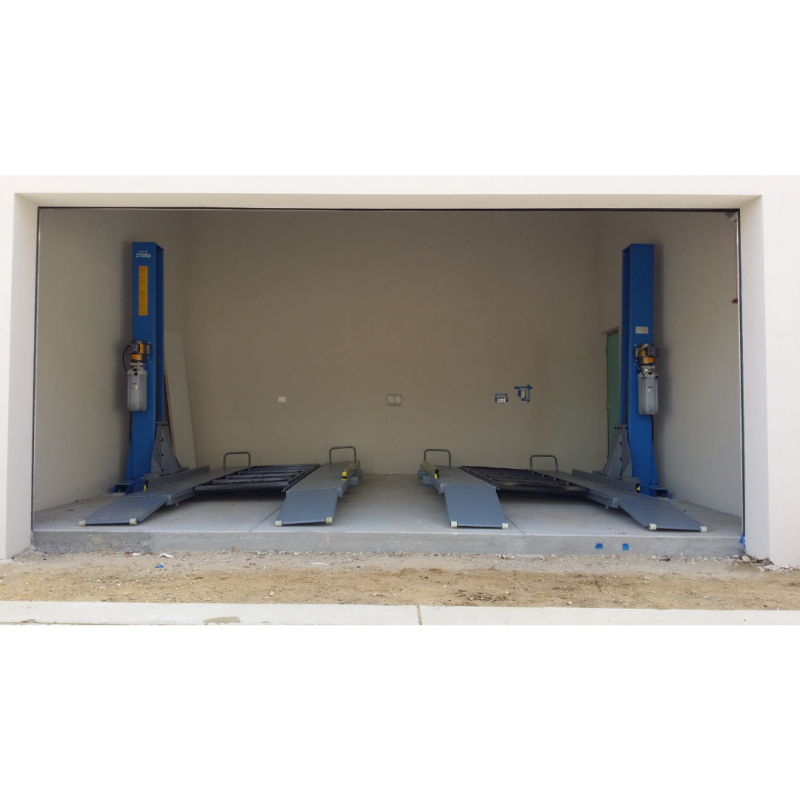Car Hoists
How Thick Should A Concrete Slab Be For A Car Lift?
When it comes to installing a car lift in your garage, the foundation is more important than you might think. The thickness of the concrete slab that supports your car lift plays a critical role in ensuring safe and efficient operation.
In this guide, we’ll explore the factors to consider when determining the ideal car hoist concrete thickness for installation, ensuring both stability and longevity.
Importance of a Stable Foundation
The stability of your car lift installation hinges on a strong and durable foundation. A properly thick concrete slab provides the necessary support to prevent structural damage and ensure the safety of both the lift and the vehicles it’s carrying. Without the right foundation, the lift’s stability can be compromised, potentially leading to accidents or equipment malfunction.
Manufacturer Recommendations
Before pouring any concrete, it’s essential to consult the manufacturer’s guidelines and specifications for your car hoist concrete requirements. Car lift manufacturers take various factors into account when deciphering the appropriate concrete requirements. Lift capacity, design, load distribution, and other technical details are carefully considered to determine the minimum thickness required to ensure safe and efficient operation.
Understanding Load Capacity
The load capacity of your car lift is a significant factor in determinin ghow thick a concrete slab for a car lift needs to be, as heavier vehicles or higher lift capacities exert greater pressure on the foundation. To evenly distribute this load and prevent issues like cracking or sinking, a thicker concrete slab might be necessary. Ensuring adequate slab thickness helps maintain the lift’s structural integrity over time.
Analysing Soil Conditions
The type and condition of the soil beneath the concrete slab are also crucial considerations. Softer or unstable soils require thicker slabs to provide proper support and prevent settling or shifting. A thorough assessment of the soil conditions by a professional can help determine the right thickness to ensure the stability of the car lift and the safety of its users.
Considering Local Building Codes
When planning your car lift installation, it’s essential to adhere to local building codes and regulations. Many areas have specific requirements for car lift installations, including guidelines for concrete slab thickness. By following these codes, you not only ensure the safety of your installation but also avoid potential legal complications down the line.
Structural Reinforcement
The design and construction of the concrete slab can significantly impact its load-bearing capacity. Depending on factors like soil conditions and load capacity, structural reinforcement measures may be necessary. This can include using materials like rebar or wire mesh to enhance the slab’s strength and durability, providing an extra layer of security for your car lift.
Professional Engineering Evaluation
For peace of mind and accurate decision-making, it’s highly recommended to enlist the expertise of a professional engineer or structural consultant. These professionals can assess all relevant factors, including soil conditions, load capacity, and local regulations. Their experience ensures that your concrete slab’s thickness is optimally suited to support your car lift safely and effectively.
Regular Maintenance and Inspection
After your car lift installation is complete, the journey doesn’t end there. Regular maintenance and inspection of the concrete slab are essential to its ongoing integrity and stability. Keep an eye out for any signs of cracking, sinking, or other structural issues. If you notice anything amiss, it’s crucial to address it promptly to prevent further complications.
Key Takeaways
The thickness of the concrete slab supporting your car lift is a crucial consideration for its safe and efficient operation. By following manufacturer recommendations, considering load capacity, analysing soil conditions, adhering to local building codes, and potentially incorporating structural reinforcement, you can ensure the stability and longevity of your car lift installation.
At AAQ, we stock a range of car hoists and car lifts, each of which has different concrete footing requirements. For specific requirements, read our FAQs, or contact us today for more information.

